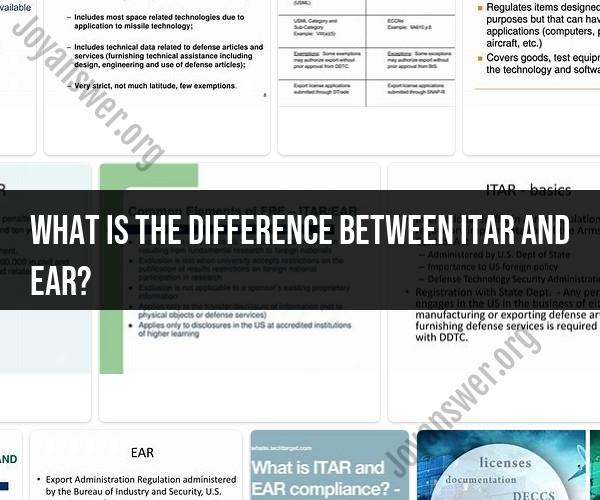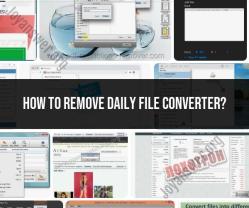What is the difference between ITAR and ear?
ITAR (International Traffic in Arms Regulations) and EAR (Export Administration Regulations) are two sets of U.S. government regulations that control the export and transfer of sensitive technologies, goods, and information. These regulations aim to protect national security, prevent the proliferation of weapons of mass destruction, and maintain a competitive edge in technology and defense. Here's an overview of ITAR and EAR:
ITAR (International Traffic in Arms Regulations):ITAR is administered by the U.S. Department of State and regulates the export, import, and transfer of defense articles and services on the U.S. Munitions List (USML). These are items, technologies, and services specifically designed, developed, or modified for military applications. ITAR covers a wide range of defense-related items, including weapons, ammunition, military vehicles, and certain software.
Key points about ITAR:
Scope: ITAR applies to the export of defense articles and services identified on the USML. These items are considered inherently sensitive due to their potential military applications.
Registration: Manufacturers, exporters, and brokers of defense articles and services covered by ITAR must register with the U.S. Department of State's Directorate of Defense Trade Controls (DDTC).
Licensing: Exporting covered defense items requires obtaining licenses from the DDTC. Licenses specify the terms and conditions under which the export can occur.
EAR (Export Administration Regulations):EAR is administered by the U.S. Department of Commerce and regulates the export, reexport, and transfer of items that have both commercial and potential military or security uses. EAR controls items on the Commerce Control List (CCL), which includes goods, technology, software, and certain services.
Key points about EAR:
Scope: EAR covers a wide range of items with both civilian and military applications. Items on the CCL are categorized based on factors such as technology level, intended use, and end-user.
Classification: Exporters must classify their items according to the Export Control Classification Number (ECCN) provided in the CCL. The ECCN determines the level of control and licensing requirements.
Licensing: Certain exports require a license from the Bureau of Industry and Security (BIS). Others may be eligible for a license exception if specific criteria are met.
"Deemed Export": The EAR considers the release of controlled technology or technical information to a foreign person (even within the U.S.) as an export. This is known as a "deemed export" and is subject to EAR regulations.
Both ITAR and EAR are complex regulatory frameworks that require careful understanding and compliance. Exporters, manufacturers, researchers, and individuals involved in international trade of sensitive items must be aware of these regulations, especially if their work involves defense, military technology, or dual-use items. It's important to consult legal and regulatory experts when dealing with these export control regulations to ensure full compliance and avoid potential penalties.












